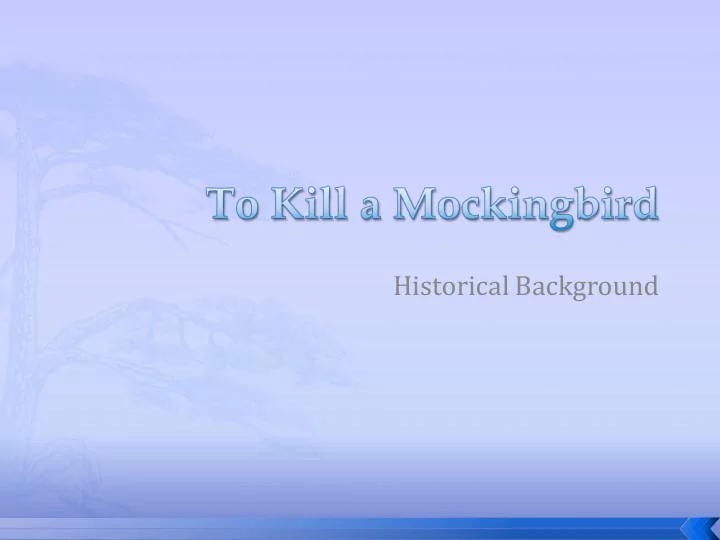

Historical Background
Plessy v. Ferguson (1896): Supreme Court rules that “separate but equal” meets constitutional requirements and thereby legalizes segregation in private businesses. Brown v. Board of Education (1954): Overturns Plessy v. Ferguson and the decision stated that "separate educational facilities are inherently unequal.” Civil Rights Act of 1964: a landmark piece of legislation in the United States that outlawed major forms of discrimination against blacks and women, and ended racial segregation in the United States. It
Segregation may be de jure (Latin, meaning "by law") — mandated by law — or de facto (also Latin, meaning "in fact"); de facto segregation may exist even illegally
After the Emancipation Proclamation abolished slavery in the South, racial discrimination became regulated by the so-called Jim Crow laws, which mandated strict segregation of the races. Though such laws were instituted shortly after fighting ended in many cases, they only became formalized after the end of Republican-enforced Reconstruction in the 1870s and 80s during a period known as the lowest point of American race relations.
This legalized segregation lasted up to the 1960s, primarily through the deep and extensive power of the Democratic Party in the South.
Many parallels are evident between the trial of Tom Robinson and the Scottsboro Trials. On March 25, 1931, a freight train was stopped in Paint Rock (Northern Alabama) and nine young African-American men who had been riding the rails were arrested.
Also, two white women, one underage, descended from the freight cars. They accused the men of raping them on the train.
Scottsboro Trials Tom Robinson’s Trial Occurs in the 1930s Took place in the 1930s Takes place in Took place in Southern Alabama Northern Alabama Begins with a charge Began with a charge of of rape made by a white rape made by white woman against an women against African-American man African-American men The poor white The poor white status of the accusers was a status of Mayella is a critical issue critical issue
Scottsboro Trials Tom Robinson’s Trial A central figure is A central figure was a Atticus heroic judge The jury ignores The jury ignored evidence, for evidence, that the example, that Tom women suffered no has a useless left arm injuries Attitudes about Southern women and Attitudes about poor whites Southern women and complicate the trial of poor whites Tom Robinson complicated the trial
Nelle Harper Lee, the author of To Kill a Mockingbird , had many childhood experiences which are similar to those of her narrator, Scout Finch.
Harper Lee’s Childhood Grew up in 1930s – rural southern Alabama town Father – Amasa Lee – attorney who served in state legislature in Alabama Older brother and young neighbor (Truman Capote) are playmates Harper Lee – an avid reader Six years old when Scottsboro trials were covered in state and local newspapers
Scout Finch’s Childhood Grew up in 1930s – rural southern Alabama town Father – Atticus Finch – attorney who served in state legislature in Alabama Older brother and young neighbor (Dill) are playmates Scout reads before she enters school; reads Mobile Register newspaper in first grade Six years old when the trial of Tom Robinson takes place
1954 – US Supreme Court rules in Brown v Board of Education Topeka, Kansas, that racial segregation in the public schools is unequal and, therefore, illegal
Rosa Parks is arrested for refusing to give up her seat on a Montgomery city bus. Emmett Till, a young African American man, is murdered while visiting the south.
Home of Martin Luther King, Jr. is bombed in Montgomery. King is a leader in the Montgomery bus boycott and designated spokesperson. Motions are filed in the US District Court calling for an end to bus segregation.
Warrants are issued for arrest of 115 leaders of the Montgomery bus boycott US Supreme Court decides in favor of Montgomery bus boycotters, by ruling bus segregation illegal.
Federal troops are sent to Little Rock, Arkansas, to enforce court- ordered desegregation of schools
Publication of To Kill a Mockingbird in the Fall – shoots to top of NY Times Best Seller list
Recommend
More recommend